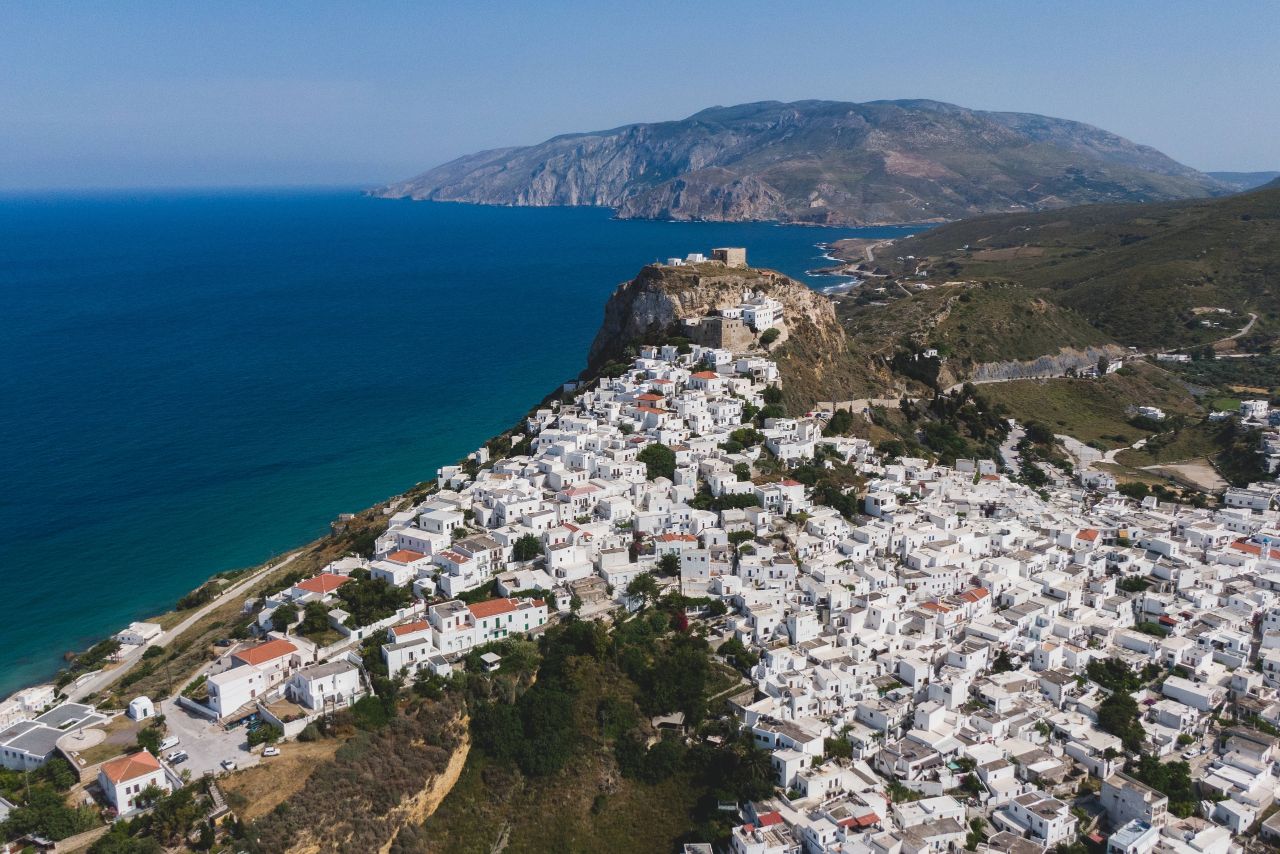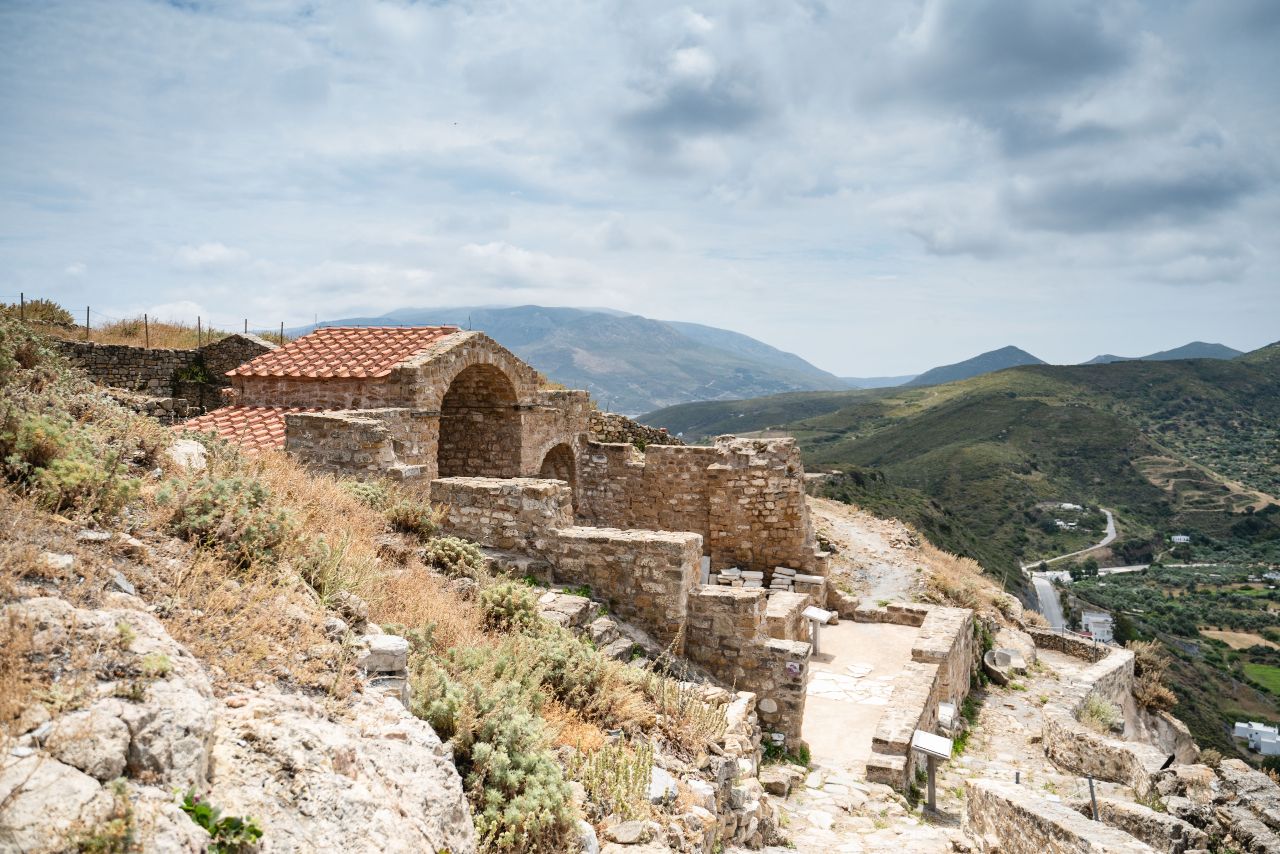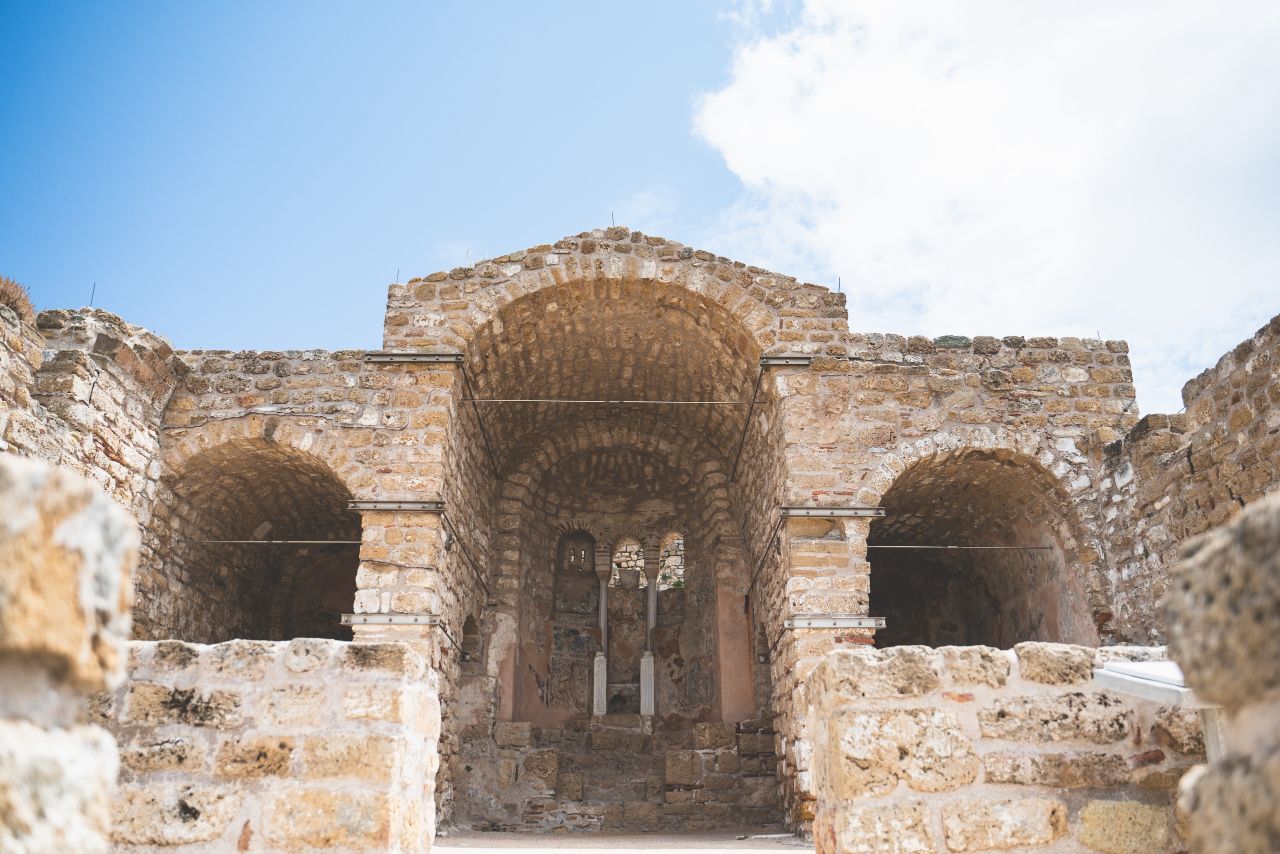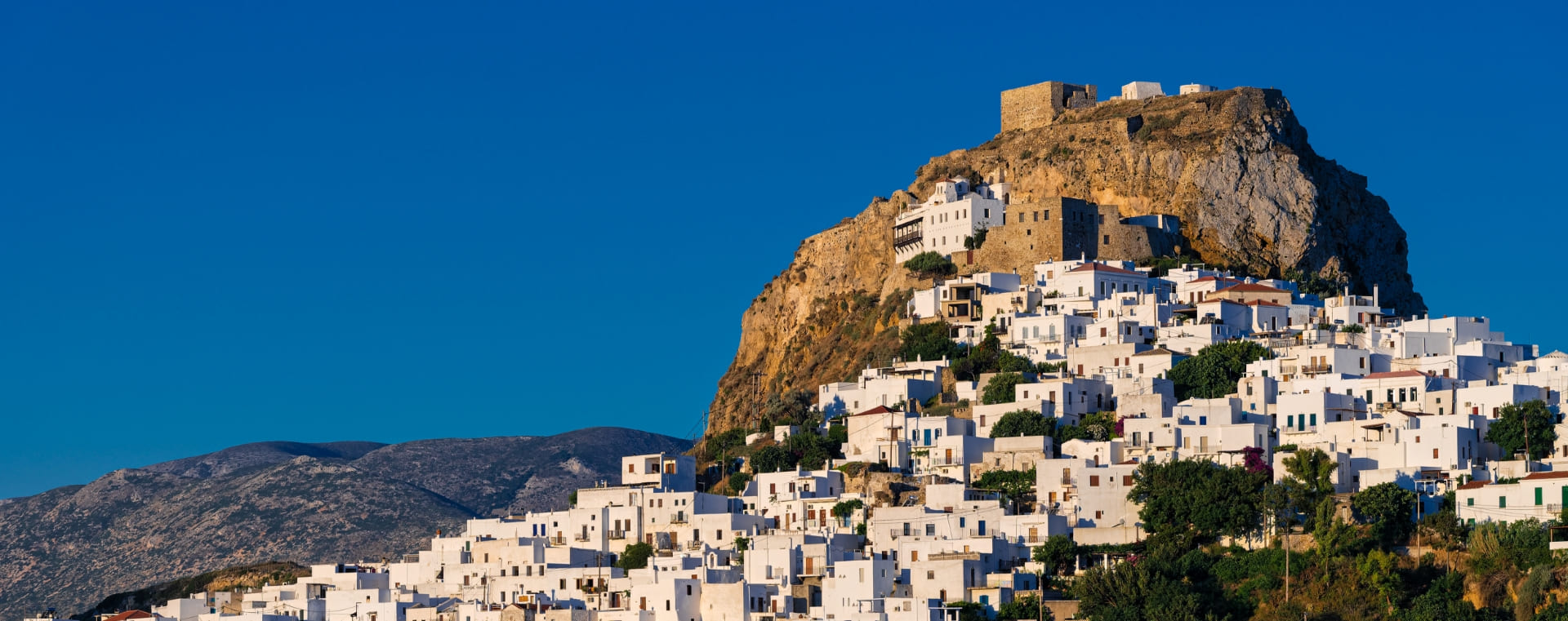ANTIQUITIES
Skyros has been inhabited since the Neolithic period (5500-2800 BC) as evidenced by the remains that have been found in various areas on the island. It flourished during the early Bronze Age (2800-1900 BC) and reached its peak during the Mycenaean period (1650-1100 BC).
Skyros appears important in both the geometric and archaic years. In 475 BC conquered by the Athenians and in 323/22 BC. passes into the hands of the Macedonians. In 197 BC it was occupied by the Romans. From the 2nd c. A.D., the Christian religion spreads on the island.
On the island there are many antiquities from the ancient era to the Byzantine times and many attractions of which we note the following: In the castle-fortress of the island with its ancient walls and towers, in Palamari, Achilli, Markesi, Paleokastro. There are also several churches of architectural interest. Some also save wood-carved icons: the church of Ag. Georgiou in the monastery of the same name, the church of Ag. Ioannou in the shells, Our Lady of Thodoris et al.
The Monastery of St. George was originally built as an independent Monastery in the first half of the 13th century probably. In 1447 he joined the Megistis Lavra Monastery of Agios Oros as a member.
LEARN MORE…
Its entire building complex is from the years of Venetian and Turkish rule. Small additions, repairs and renovations were made in the 19th, 20th, and 21st centuries.
From the prehistoric Skyros, the archaeological site in Palamari with ruins of a fortified settlement from the early Bronze Age is very interesting. Important finds from this settlement are exhibited in the archaeological museum of Skyros.
The last phase of the Mycenaean civilization is represented in Skyros mainly with a series of very interesting pottery objects, most of which are exhibited in the archaeological museum of the island.
The geometric and ancient years of Skyros (11th century – 475 BC) is the era of the Dolopi, who were Greeks and developed a very important culture. Finds from this era are exhibited in the archaeological museum of Skyros (it is its richest collection).
From the years of the Athenian period of the island, apart from a few sculptures (very valuable) and a few vases, the ancient fortification (the walls) is the most impressive presentation of the classical period on the island. It was a grand and beautiful work, done in the 4th century BC. and its ruins are preserved to this day (the two towers to the east and the old tower to the northwest).











